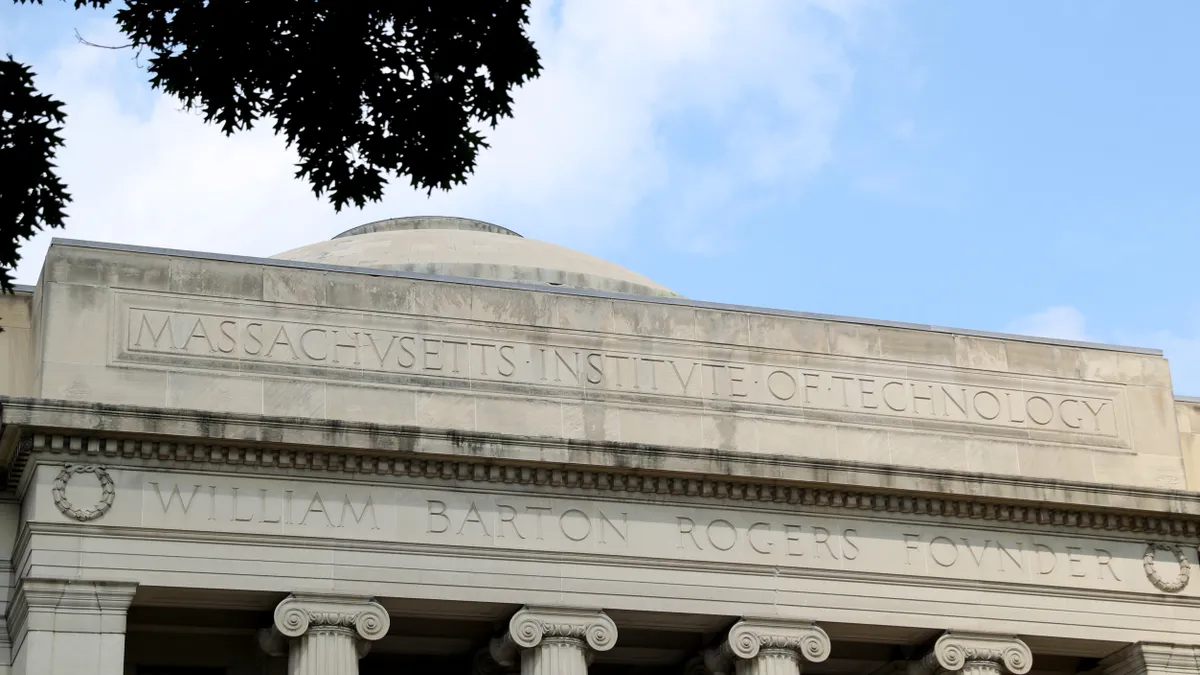Dive Brief:
- New York University has received more than 100,000 applications for first-year students hoping to start college next fall, a 20% increase from last year. It will enroll only about 6,500 of them.
- The announcement mirrors news of big growth in early admission requests at other elite institutions. Elimination of standardized testing requirements could be causing some of the gains, experts say.
- But recent data suggest the schools are largely outliers, and that students from historically disadvantaged groups still lag their peers in key application benchmarks.
Dive Insight:
The Common Application reported a 15% year-over-year increase in first-year applications submitted through Jan. 5 at its member schools, according to data shared with Higher Ed Dive. Around 900 schools use the application, including NYU, making it a helpful proxy for enrollment patterns nationwide.
The increase in unique first-year applications was smaller — at 8% — suggesting the overall gains stemmed at least in part from students applying to more colleges. But the rate varies widely by student group.
Earlier reports found first-generation and low-income students were submitting the Common Application at lower rates than they were a year ago. Though the latest data shows they've since caught up, their gains lag those of their peers (see table).
Unique applications by student status
| 2020-21 applications | % change from 2019-20 | |
|---|---|---|
| First-generation | 253,441 | 3.6% |
| Non-first-generation | 675,257 | 10.2% |
| Fee waiver recipient | 388,501 | 2.1% |
| Non-fee waiver recipient | 540,197 | 13.3% |
| All unique applicants | 928,698 | 8.3% |
Source: Common Application
This year's application season is unusual. In response to the pandemic, hundreds of schools waived standardized testing requirements as part of their applications.
"[H]aving one less hurdle in applying allows for more students to consider a broader set of choices," Brett Schraeder, principal of financial aid optimization at consultancy EAB, said in an email. Schraeder credited the testing change as a likely contributor to NYU's gains, citing its more than 20% year-over-year increases in first-generation applicants and those from underrepresented minority groups.
Research suggests private liberal arts colleges receive "a significant increase" in applications after implementing test-optional policies, Karina Salazar, a higher education professor at the University of Arizona, said in an email. Salazar noted that change likely contributed to NYU's gains.
Growth in early admissions decisions over the last decade could also be a factor, Salazar said. Around 17% of NYU applications were early decision submissions, according to a university release. Some schools also pushed back their early application deadlines, leaving more time for students to apply.
An NYU spokesperson did not respond to Higher Ed Dive's emailed request for comment Thursday.
Not all schools are seeing a glut of new applications, however. EAB's Schraeder notes that many regional public and private colleges using the firm are seeing declines. "Most students are served by these types of regional institutions, so their health may be more instructive in understanding the big picture for college enrollment," Schraeder wrote.
Applications fell 5% across the 23-institution California State University system, with one campus seeing a 17% decrease, according to a local media report.
Financial aid requests, another leading indicator of enrollment, were down 11.4% year-over-year as of Jan. 1, according to the National College Attainment Network's tracker.
It's a slight improvement over a nearly 17% lag recorded in late November. Even still, students from high schools with large shares of low-income and Black and Hispanic students were less likely to have completed the Free Application for Federal Student Aid.
"This is an indication that the challenge we saw this past fall in new student enrollment may continue into next fall," Schraeder said.
FAFSA completion by students' high school status as of Jan. 1
| High school type | Year-over-year change |
|---|---|
| Title I-eligible | -14.7% |
| Title I-ineligible | -8.7% |
| High minority | -17% |
| Low minority | -6.8% |
Source: National College Attainment Network. NCAN defines "high minority" as schools in which 40% or more of the students are Black or Hispanic.
Colleges can help with financial aid advising and FAFSA completion at K-12 schools they recruit from to help address this issue, said Bill DeBaun, director of data and evaluation for NCAN.
Students preparing to graduate from high school this spring aren't the only ones colleges should be considering, DeBaun added, citing preliminary data projecting a significant decrease in high school graduates who went immediately on to college this fall.
"While elite schools probably are encouraged to have an embarrassment of riches in terms of applicants," he said, "there's a lot of work to do to reconnect students from the class of 2020 with a postsecondary pathway and to ensure that the vast majority of the class of 2021, who will not be applying to elite institutions, get to the postsecondary pathway that best serves their interests."
Editor's note: A reference to fall enrollment of spring 2020 high school graduates has been corrected because of an error in data from the National Student Clearinghouse Research Center. You can read more about the change here.















